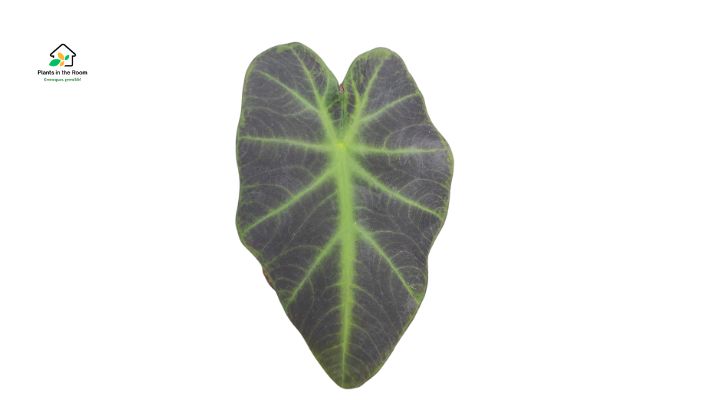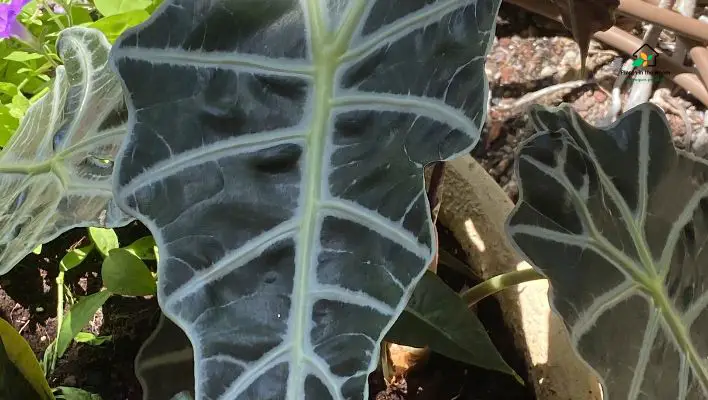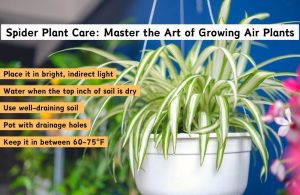This article covers the following areas –
- Light Requirements for Your African Mask
- Watering Your African Mask
- Maintaining Ideal Humidity Levels for Your Plant
- Creating the Best Soil Condition for African Mask
- Guide to Fertilizing Your African Mask
- Repotting Your African Mask Plant: Tips and Guidelines
- Pruning Your African Mask: Tips to Follow
- Final Note
- Get to Know Your African Mask
African Mask Plant (Alocasia Amazonica) is a stunning tropical houseplant with large, arrow-shaped leaves that resemble an African mask, hence its name. While this plant is a popular choice for indoor gardening enthusiasts, it requires proper care to keep it thriving.
Therefore, in this comprehensive guide, I’ll take you through the steps on how to take good care of your African Mask Plant.
Provide bright, indirect sunlight, high humidity, and well-draining soil to your African Mask. Water when the top 1-2 inches of soil is dry, and fertilize every 2 weeks during the growing season. Prune to maintain shape and remove dead leaves. Avoid overwatering, direct sunlight, and low humidity.
Now, let’s get into some more detail about the different factors to consider to take the best care of your African Mask.
Light Requirements for Your African Mask
African Masks require bright but indirect sunlight to thrive. When placed in direct sunlight, the leaves can get scorched and turn brown.
The amount of light an African Mask Plant needs depends on several factors, including the plant’s size, the size of the pot, the humidity levels, and the temperature. As a general rule, African Masks need about six hours of indirect sunlight per day. However, it’s essential to monitor the light levels around your plant regularly. Too much light can be just as damaging as too little.
If you don’t have access to natural light or if your plant is not getting enough light, you can use artificial light to supplement its needs. Fluorescent lights or LED grow lights are ideal for African Masks.
Here are some tips to help you provide the right amount of light for your African Mask Plant.
- Place your plant near a north or east-facing window where it can receive bright but filtered light.
- Rotate your plant regularly to ensure all sides get adequate light.
- Use sheer curtains or blinds to filter the light if necessary.
- If you’re using artificial light, place it about 12 inches away from the plant and adjust the height as the plant grows.
- Monitor your plant regularly to ensure that it’s getting the right amount of light for optimal growth.
Watering Your African Mask
Taking care of African Masks can be challenging, especially when it comes to watering. Overwatering or underwatering can cause serious harm to an African Mask Plant. However, finding the right balance can be tricky.
Therefore, in this part of the post, I’ll discuss different issues and give some tips related to watering your African Mask. By following these tips, you can ensure that your plant stays healthy and thrives in your home.
1) Frequency of Watering
The frequency of watering an African Mask Plant depends on several factors, such as the size of the plant, the size of the pot, the humidity levels, and the temperature.
As a general rule, water the plant when the top 1-2 inches of soil feel dry to the touch. This ensures that the soil is moist but not waterlogged, which can lead to root rot. Overwatering can also cause the plant’s leaves to turn yellow and the soil to develop a sour odor.
2) Watering Technique
When watering an African Mask Plant, it’s essential to water thoroughly to ensure that the water reaches the plant’s root system.
Water the plant until you see water coming out of the drainage holes at the bottom of the pot. This ensures that the entire root system is moist and helps prevent issues like dry soil pockets. Once the pot has drained, empty the saucer underneath the pot to prevent the plant from sitting in water.
3) Signs of Overwatering and Underwatering
Overwatering and underwatering can both cause harm to your African Mask Plant. Signs of overwatering include yellowing leaves, mushy stems, and a sour odor from the soil. Signs of underwatering include dry, crispy leaves and soil that feels dry to the touch.
Maintaining Ideal Humidity Levels for Your Plant

African Masks are native to tropical forests where humidity levels are high. Therefore, they require high levels of humidity to thrive indoors. When the humidity is too low, the leaves can turn brown or develop brown tips. Additionally, low humidity levels can make the plant more susceptible to pests and diseases.
No worries! Here I’ll talk about the important factors regarding humidity for your African Mask.
The ideal humidity level for an African Mask Plant is between 60% to 80%. You can measure the humidity level with a hygrometer. If the humidity levels in your home are lower than 60%, you may need to increase the humidity levels around the plant.
To increase the humidity levels around your African Mask Plant, you can use several methods. Here are some effective methods.
- Place a tray of water near the plant. This will increase the moisture level in the air around the plant. You can also place pebbles in the tray and sit the pot on top to prevent the plant from sitting in water.
- Use a humidifier. A humidifier is an excellent way to increase the humidity levels in your home. Place it near the plant to create a humid microclimate.
- Group several plants together. Grouping several plants together can create a microclimate with higher humidity levels. The plants release moisture into the air, increasing the humidity levels in the surrounding area.
- Mist the plant’s leaves. Misting the plant’s leaves with water can increase the humidity levels around the plant. However, it’s important to mist the leaves and not the soil, as wet soil can lead to root rot.
Regular monitoring of the humidity levels around your African Mask Plant is crucial to ensure that it’s getting the right amount of moisture. Signs of low humidity include brown tips on the leaves, drooping leaves, and dry soil. If you notice these signs, you may need to increase the humidity levels around the plant.
Creating the Best Soil Condition for African Mask
To keep your African Mask healthy and thriving, it’s crucial to provide them with an appropriate soil environment. With the right soil conditions, you can help your African Mask Plant grow and flourish. Here are some tips to give your plant the best soil condition.
Tip #1: Ensure a Well-draining Soil
African Masks require well-draining soil to prevent water from pooling around the roots. Waterlogged soil can lead to root rot and cause harm to the plant. Well-draining soil allows excess water to drain out, ensuring that the roots are moist but not waterlogged.
Tip #2: Create an Ideal Potting Mix
A good potting mix for African Mask Plants should contain peat moss, perlite, and vermiculite. These materials ensure adequate drainage while retaining enough moisture for the plant’s roots. Peat moss helps retain moisture, while perlite and vermiculite improve drainage. You can also add some orchid bark or charcoal to the potting mix to improve drainage further.
Tip #3 Avoid Using Heavy Soils
Heavy soils that retain water, such as garden soil or topsoil, should be avoided. These soils can suffocate the roots and cause root rot. Additionally, heavy soils can become compacted over time, making it difficult for water to drain out.
Tip #4 Check the Soil Moisture Regularly
Regular monitoring of the soil moisture levels is crucial to ensure that your African Mask Plant is not overwatered or underwatered. Test the soil moisture levels by inserting your finger into the soil up to the second knuckle. If the soil feels dry, it’s time to water the plant. If the soil feels moist, wait a few more days before watering.
Guide to Fertilizing Your African Mask

Fertilizing is an essential part of African Mask care as it provides the necessary nutrients for the plant’s growth and development. Fertilizers contain essential elements like nitrogen, phosphorus, and potassium that promote healthy plant growth. Here are some tips on choosing the right fertilizer, fertilizing schedule, application, and alternative fertilizers to ensure your African Mask Plant thrives.
1. Choosing the Right Fertilizer
African Masks require a balanced fertilizer with equal amounts of nitrogen, phosphorus, and potassium. Look for a water-soluble fertilizer that’s suitable for houseplants. You can also use a slow-release fertilizer that releases nutrients over several months.
2. Fertilizing Schedule
During the growing season (spring and summer), fertilize your African Mask Plant every two weeks. This ensures that the plant has access to the necessary nutrients for growth. Reduce the frequency of fertilizing during the dormant season (fall and winter) to once a month.
3. Fertilizer Application
When applying fertilizer, always follow the instructions on the package. Too much fertilizer can cause harm to the plant, while too little can lead to nutrient deficiencies. Dissolve the fertilizer in water and apply it to the soil around the plant. Avoid getting fertilizer on the leaves, as it can cause burning.
4. Alternative Fertilizers
If you prefer a natural approach, you can use compost tea or fish emulsion instead of chemical fertilizers. These alternatives provide essential nutrients for the plant’s growth and are safe for the environment.
5. Monitoring the Plant’s Response to Fertilizers
Regular monitoring of the plant’s response to fertilizer is crucial to ensure that you’re providing the right amount of nutrients. If the plant’s leaves start to turn yellow or brown, it may be a sign of overfertilizing. On the other hand, if the plant’s growth is slow, it may be a sign of underfertilizing.
Repotting Your African Mask Plant: Tips and Guidelines
African Mask Plants grow rapidly, and as they grow, they may outgrow their pots. Repotting is necessary to provide the plant with more space for growth and to ensure that the roots have adequate room to spread out.
Additionally, repotting allows you to inspect the roots and remove any dead or damaged ones. Here are the answers to some questions that may come to your mind while repotting your African Mask.
When to Repot Your African Mask?
It’s time to repot your African Mask when you notice that the roots are growing out of the drainage holes, the soil is drying out quickly, or the plant has become top-heavy and unstable. This plant should be repotted every two years or when the plant has outgrown its current pot.
What Is the Right Pot?
When repotting, choose a pot that is one size larger than the current one. A pot that is too large can hold too much moisture, which can lead to root rot. The pot should also have drainage holes to allow excess water to drain out.
What Should Be the Repotting Process?
To repot your African Mask, gently remove it from its current pot and remove any dead or damaged roots. Place the plant in the new pot and fill in the gaps with fresh potting soil. Water the plant thoroughly and allow it to drain before placing it in its new location.
After repotting, it’s essential to monitor the plant’s condition closely. Avoid fertilizing the plant for at least two weeks to allow the roots to adjust to their new environment. Water the plant as needed, ensuring that the soil is moist but not waterlogged.
Pruning Your African Mask: Tips to Follow
Pruning your African Mask Plant is essential to keep it healthy and maintain its shape. Regular pruning helps to remove dead or damaged leaves, promotes bushier growth, and prevents the plant from becoming too large or leggy.
Now, let’s learn in detail about how to prune your African Mask. Here are some tips to ensure an ideal pruning process for your lovely plant.
- When pruning your African Mask Plant, it’s essential to use clean and sharp scissors or pruning shears to prevent damaging the plant. Dirty or dull tools can cause damage to the plant and make it more susceptible to pests and diseases.
- To prune yellowing or damaged leaves, cut them off at the base of the stem. This helps to prevent the spread of disease and allows the plant to focus its energy on healthy leaves.
- To encourage bushier growth, you can trim back leggy or overgrown stems. Use sharp pruning shears to make clean cuts just above a leaf node. Cutting back the stem encourages the plant to produce new growth from the nodes, resulting in a bushier plant.
- Prune your African Mask Plant in the spring or early summer when it’s actively growing. Avoid pruning in the fall or winter, as this can slow down growth and make the plant more susceptible to cold temperatures.
- After pruning, it’s essential to monitor the plant’s condition closely. Water the plant as needed and provide it with adequate light and humidity to encourage new growth.
Final Note
Like all other plants, African Mask also requires proper care to thrive. I believe, with the tips and guidelines provided in this comprehensive guide, you can confidently care for your African Mask Plant and enjoy its beautiful foliage as it grows and flourishes in your home.
Happy planting!
Get to Know Your African Mask
| Indicator | African Mask Plant |
|---|---|
| Family | Araceae |
| Genus | Alocasia |
| Species | Various |
| Common Name | African Mask Plant |
| Origin | Southeast Asia and the Pacific Islands |
| Plant Type | Perennial, Indoor Plant |
| Mature Size | 1-6 feet in height |
| Growth Rate | Fast |
| Light Requirements | Bright, indirect sunlight |
| Watering Requirements | Moderate, keep soil moist but not waterlogged |
| Soil Preference | Well-draining soil, such as a mix of peat moss, perlite, and vermiculite |
| pH Preference | 5.5-7.0 (Slightly acidic to neutral) |
| Temperature Tolerance | 65-80°F (18-26°C) |
| Humidity Tolerance | High humidity, around 60-80% |
| Fertilization | Balanced fertilizer every two weeks during the growing season |
| Propagation | Division of offsets or by stem cuttings |
| Pests | Spider mites, mealybugs, scale insects |
| Diseases | Root rot, bacterial blight |
| Toxicity | Toxic to humans and pets when ingested |
| Special Features | Attractive foliage, air-purifying |
| Popular Uses | Indoor houseplant, offices, lobbies, malls |






